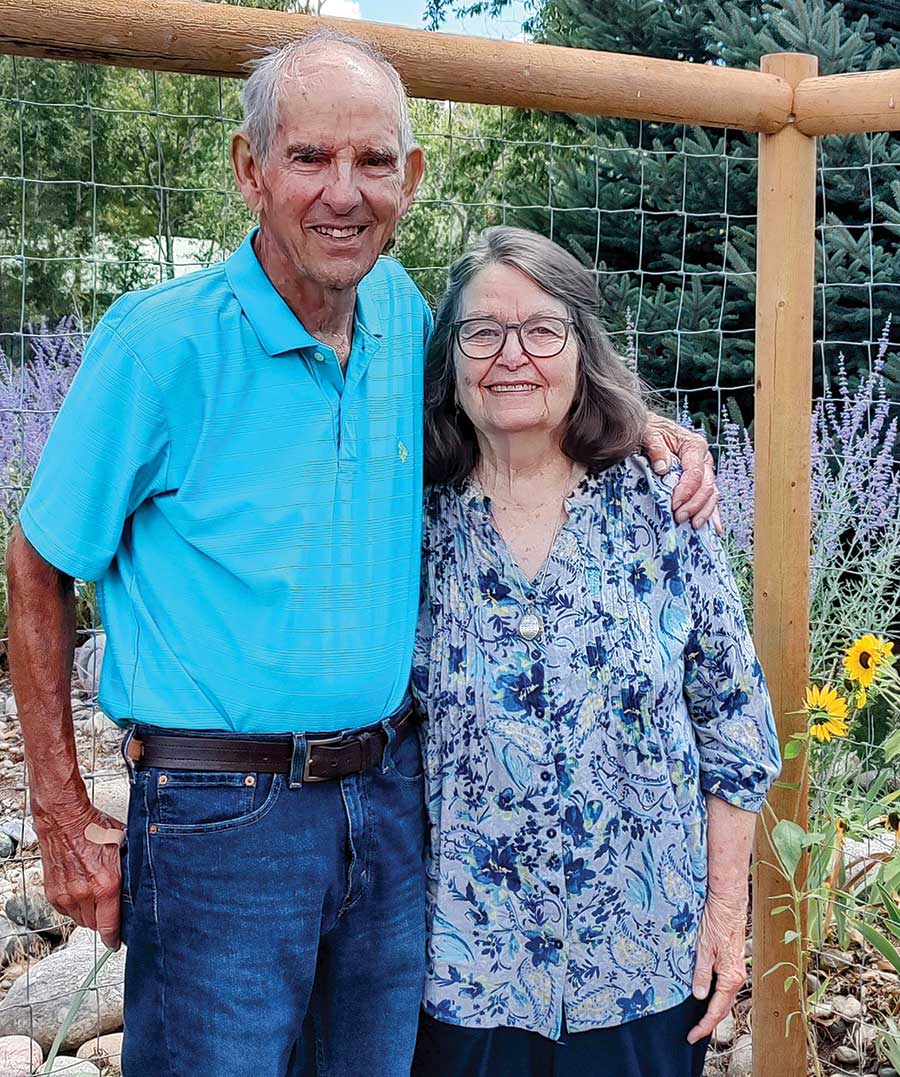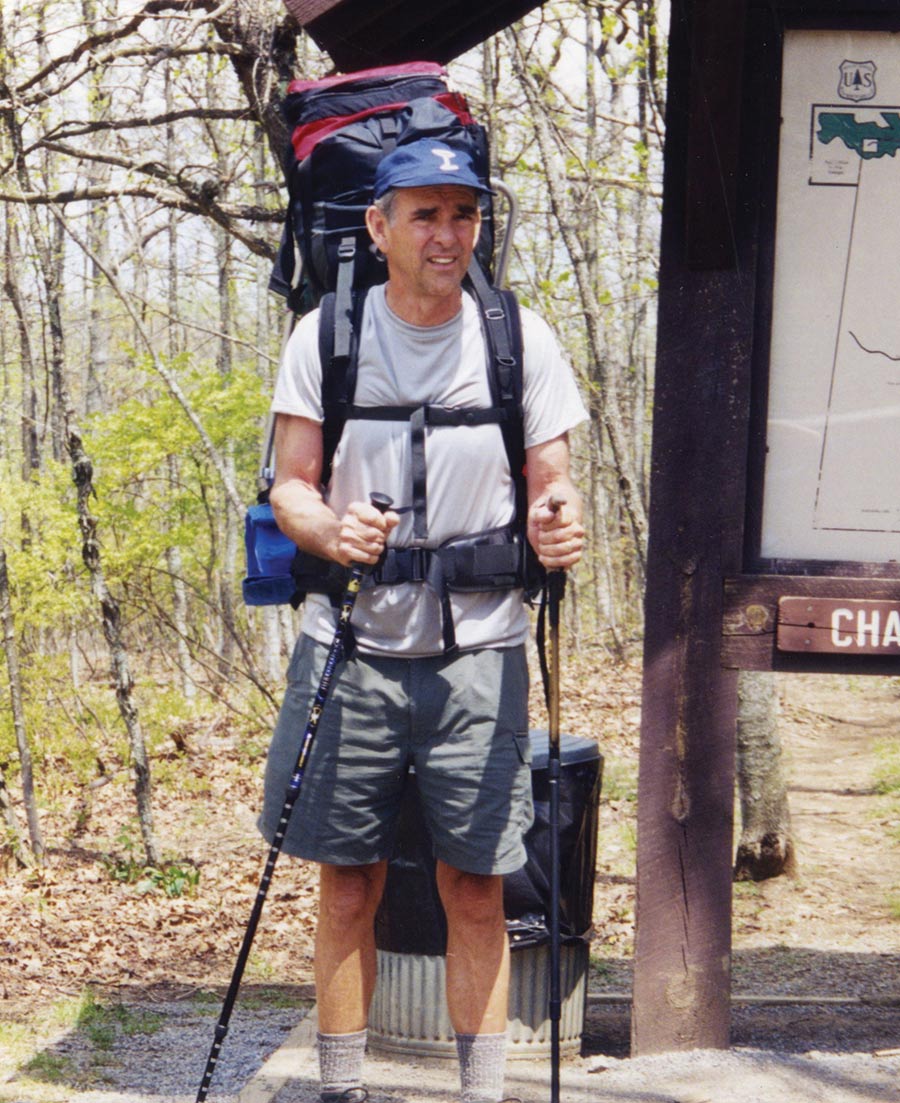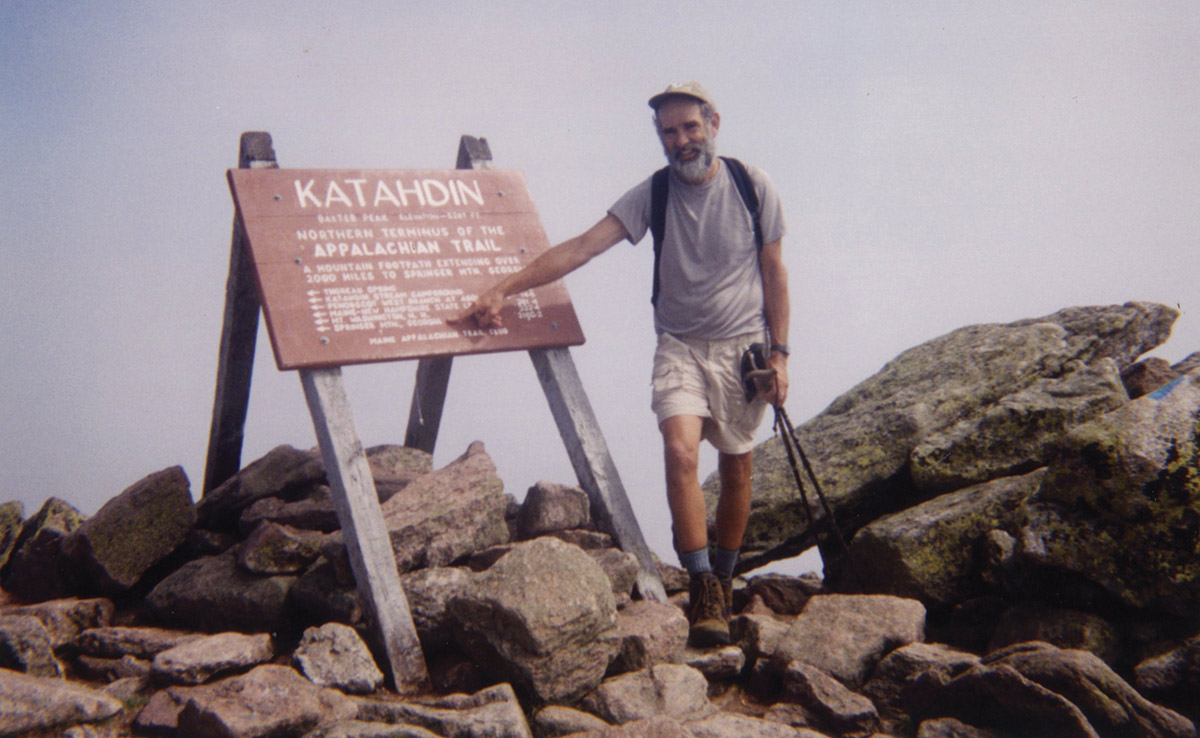
FOR FUTURE
GENERATIONS
A retired thru-hiker and his wife support the ATC’s mission with a gift in their will.
The first person to complete an official thru-hike of the Appalachian Trail famously said that he did so in order to “walk the war out of my system.” Earl Shaffer, who completed his thru-hike in 1948, had served for four years in the Pacific Theater during World War II. At Iwo Jima, he witnessed the death of a childhood friend. For Shaffer, walking the Appalachian Trail was a way of coping with what today we would call post-traumatic stress disorder, or PTSD.
The tens of thousands of people since Shaffer who have attempted a thru-hike, and the fewer than 30,000 who have completed one, have no doubt a wide variety of motivations for undertaking the challenge. Many attempt the feat at moments of transition in their lives, whether from student life to adulthood, from military service to civilian pursuits, or from professional careers to retirement.
A native of southern California, LeRoy had spent time hiking in his 20s as a young professional living in northern California. He enjoyed carrying his young kids on his back on hikes. Later, in his early 50s, while he was living in Birmingham, Alabama, he recalls meeting someone who said the best hiking experience of his life had included a visit to Max Patch, in North Carolina. The discovery that Max Patch was on the Appalachian Trail helped to crystallize LeRoy’s intent to hike the A.T. following retirement.


LeRoy had made no secret of his plan to hike the entire Trail. Many of his retirement gifts had included the gear needed for a thru-hike.
But within a couple of days of getting into the routine of hiking for miles a day, recalls LeRoy, “It became a sort of job. Instead of feeling the pain of the miles under my feet, I was experiencing the intense joy of being outside, anticipating the arrival of spring and the flowers that would soon adorn the landscape.”
The discipline required to hit the daily mileage goals also became a sort of blessing for a corporate executive who had worried about the impact of downsizing, and closing branch offices, during a period of economic instability. “It was a relief to focus on the next water source, and where I would resupply, and where I would spend the night,” reflects LeRoy. “It was a relief to go to bed at night with the only worry of whether my bear bag was hung high enough.”
Like many hikers on the A.T., LeRoy was not aware of the Appalachian Trail Conservancy or its role in protecting and managing the Trail. As he headed north from Georgia, he recalled meeting volunteers and learning about the trail clubs that maintained sections of the footpath. It wasn’t until he reached the ATC’s headquarters in Harpers Ferry, West Virginia, that he understood the part the conservancy plays in leading the public-private partnership that ensures the A.T.’s continued existence.

“Our children are comfortable in their jobs, so we felt we could prioritize our charitable giving, while still providing for our two grandsons,” says LeRoy. “By giving to the ATC, we are helping ensure that people who aren’t yet born will have the opportunity to have the same experience that I did on the A.T.”
The highpoints of that experience — in addition to completing all 2,190+ miles — included giving himself a Trail name and encountering a little bit of Trail magic. As for the Trail name (“Geezer”), LeRoy jokes that he knew the tradition of other people bestowing Trail names and doubted he would like anyone else’s choice. So he got ahead of things by baptizing himself “Geezer,” which he felt was appropriate given the disparity in ages between himself, as a retiree, and the 20- and 30-somethings he encountered along the Trail.
And as for the Trail magic? It was a fellow hiker in Caratunk, Maine, who heard him on a payphone trying to make airline reservations for his return home and offered to put him up for a few days before his flight departed from Bangor. More than 20 years later, the two are still in regular touch.
It’s a classic example of generosity on the Trail that is constantly paid forward. Just as Ken and Pat LeRoy are seeking to pay it forward with their generous legacy commitment to the ATC.
To learn more about how you can support the ATC’s work through an IRA, donor-advised fund, estate plan, or other deferred commitment, contact Heather Hackett at [email protected], or visit appalachiantrail.org/planned-giving.